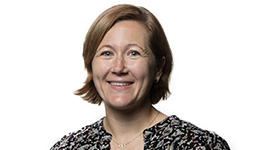Veronika Sele

Medlem av faggruppen for fôr
Fôr
Veronika har doktorgrad i analytisk kjemi. Hennes nøkkelkompetanse innenfor VKMs fagområde er metaller, kontaminanter og analytisk kjemi.
Stilling
Forsker, PhD, Seksjon for marin toksikologi, Havforskningsinstituttet
Utdanning
2009 – 2014: Ph.D. i analytisk kjemi, Universitetet i Bergen (UiB) og Nasjonalt institutt for ernærings- og sjømatforskning (NIFES).
2004 – 2006: Master i miljøkjemi, UiB og NIFES.
2001 – 2004: Bachelor i kjemi. UiB, Universitetet i Tromsø (UiTø), University of Hawaii at Manoa.
Arbeidserfaring
2018 – dd: Forsker, Seksjon for Marin Toksikologi, Havforskningsinstituttet (IMR).
2016 – 2018: Post-doc, Avdeling for Fôr trygghet, NIFES.
2014 – 2016: Forsker, Avdeling for Fôr trygghet, NIFES.
2009 – 2014: Stipendiat, Avdeling for Fôr trygghet, NIFES.
2007 – 2009: Avdelingsingeniør, Kjemilaboratoriet, Veterinærhøgskolen.
Øvrig faglig bakgrunn
Prosjektleder for det nasjonale overvåkingsprogrammet for fiskefôr (2018 – dd)
Kontaktperson for det Nasjonale referanselaboratoriet (NRL) for metaller og nitrogene forbindelser i mat og fôr (EUR-MN)
Utvalgte publikasjoner
Tibon, J., Silva, M., Sloth, J.J., Amlund, H., Sele, V. (2021) ‘Speciation analysis of organoarsenic species in marine samples: method optimization using fractional factorial design and method validation’, Analytical and bioanalytical chemistry, 413(15), pp. 3909–3923. doi: 10.1007/s00216-021-03341-4.
Marvin, H.J.P., van Asselt, E., Kleter, G., Meijer, N., Lorentzen, G., Johansen, L.-H., Hannsidal, R., Sele, V., Bouzembrak, Y. (2020). Expert-driven methodology to assess and predict the effects of drivers of change on vulnerabilities in a food supply chain: Aquaculture of Atlantic salmon in Norway as a showcase. Trends in Food Science & Technology, 103, pp.49–56.
Biancarosa, I., Sele, V., Belghit, I., Ørnsrud, R., Lock, E.-J. & Amlund, H. (2019) Replacing fish meal with insect meal in the diet of Atlantic salmon (Salmo salar) does not impact the amount of contaminants in the feed and it lowers the accumulation of arsenic in the fillet. Food Additives and Contaminants part A 36(8):1191-1205.
Sele, V., Ørnsrud, R., Sloth, J.J., Berntssen, M.H.G. and Amlund, H. (2018). Selenium and selenium species in feeds and muscle tissue of Atlantic salmon (Salmo salar). Journal of Trace Elements in Medicine and Biology, 47, 124-133.
Sele V, Sloth J.J., Lundebye A.-K., Larsen E.H., Berntssen M.H.G. and Amlund H. (2012) Arsenolipids in marine oils and fats: A review of occurrence, chemistry and future research needs. Food Chemistry, 133 (3), 618-630.